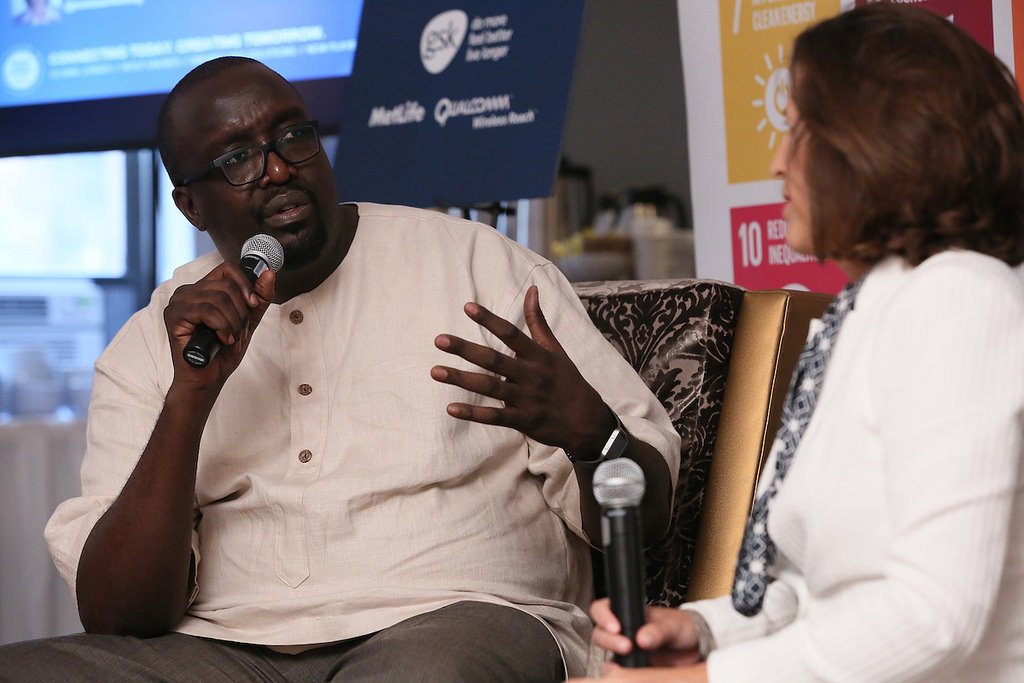Ahead of the UN Summit on Refugees and Migration, several key people in the refugee rights field met at the Social Good Summit in New York to talk about the crisis at hand. The commentary highlights how dire the situation is facing the international community, but also that the development tools to improve the lives of many refugees already exist.
A major focus of all the speakers was the impact refugee situations have on children. With the largest forcibly displaced population in the world since World War II, it is important to remember that half of these 65 million people are children. Ahead of the UN Refugees and Migration Summit, Save the Children released a report of what this population would look like if it were in fact a country. The results of that report are a sobering indictment of how much the international community is failing refugees.
If the world’s forcibly displaced were a country, it would be the 21st largest in the world–about the size of the United Kingdom.
And developmentally, it would have some serious problems.
-
The fastest-growing population in the world, on track to be the 5th largest country at its current growth rate by 2030
-
Has one of the youngest populations in the world with half its population under the age of 18
-
Would rank 4th lowest in primary school attendance
-
Has increasing rates of child marriage despite the practices decreasing globally
-
Loses far more children to preventable causes such as malaria, pneumonia and malnutrition than the global average
Despite huge gains made in improving the lives of people in underdeveloped communities since 2000, the situation for refugees are going the opposite way. Still, Save the Children also found that this hypothetical country of the displaced also had the potential to be the 54th largest economy in the world, if its citizens had access to employment. The promise that the displaced have is clear, even though it is often ignored.
Highlighting this promise casts a different light on the current refugee crisis as it shifts the focus from a short term humanitarian problem to a development issue that deserves just as much attention as those facing actual developing countries. “For decades we have treated refugee crisis as a humanitarian problem but it cannot be treated just with humanitarian resources,” said UN High Commissioner for Refugees Filippo Grandi. “We need to start from the very beginning of the crisis investing in the future.”
That investment requires a different approach to meet the needs of today’s displaced. With 60 percent of those displaced living in urban areas and not camps, aid organizations and host communities need to think more inclusively when it comes to service delivery, especially when it comes to fundamental services such as education.
This is why Save the Children is now calling for a New Deal for every forcibly displaced child, with no more than 30 days out of school for refugee children. By upholding the right to education that refugee children have, the international community can not only prevent a lost generation from forming but also invest in the future of these conflict states to help them better recovery once peace is formed.
One major takeaway from the discussion at the Social Good Summit is that even though Syrian refugees dominate the news headlines, it is important to note that it is not the only refugee crisis unfolding in the world today. Grandi noted that just days ago, refugees fleeing from South Sudan passed the one million mark. This makes South Sudan the fourth country after Afghanistan, Somalia and Syria to produce more than one million refugees. Numerous other countries – from Nigeria to Myanmar – also produce significant albeit smaller refugee flows, reinforcing the fact that refugees are a global issue and not limited to any one country or region.
“Conversations around refugees often forget that they are conversations about human beings,” noted Alan Kasujja, a journalist with the BBC and a former refugee from Uganda. And as human beings, refugees need the same care and attention as anyone else. With all the meetings this week on refugees and the forcibly displaced, the push towards recognizing a human development approach to tackle the crisis is growing, making the likelihood that the needs of refugees will finally be addressed one step closer to reality.
